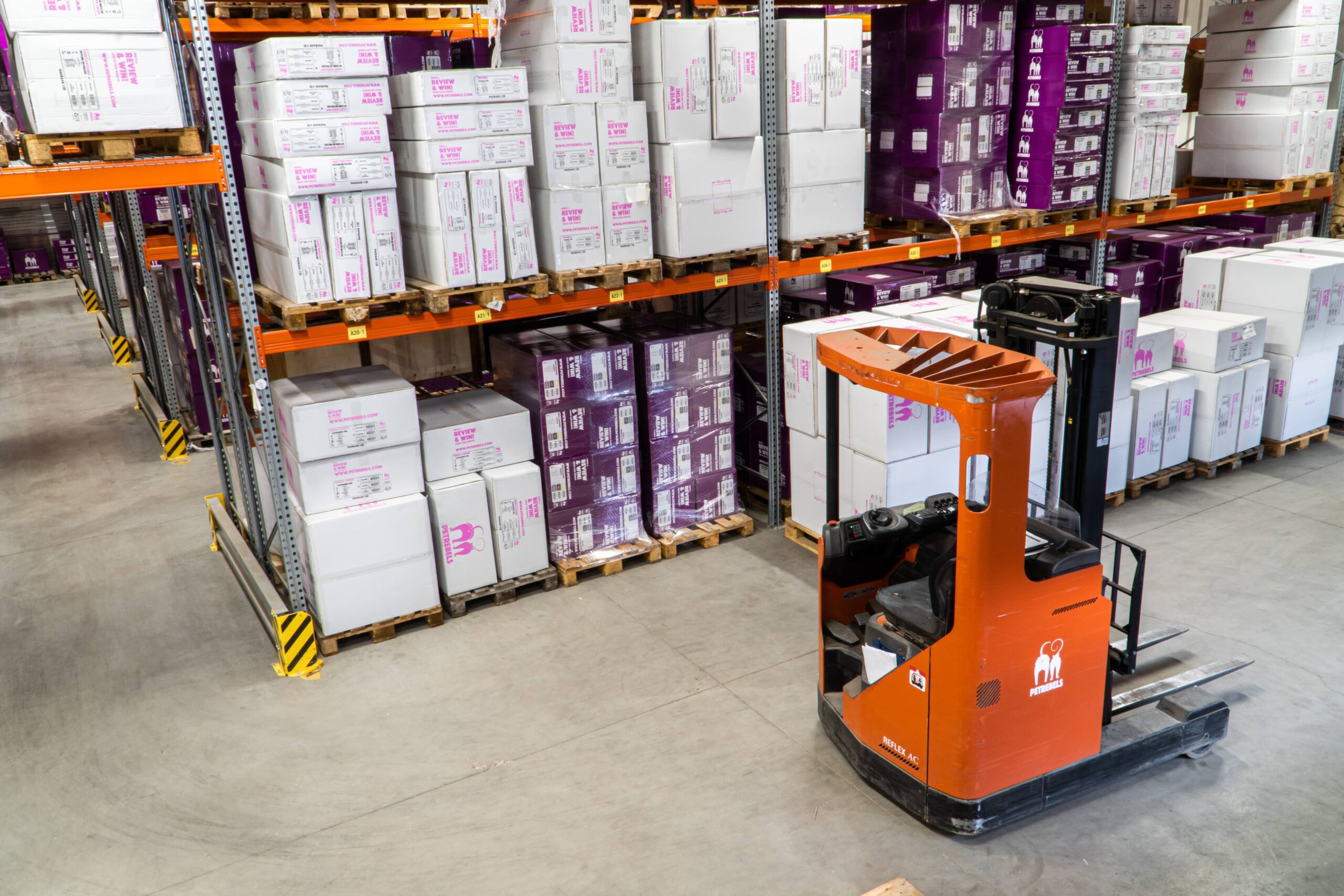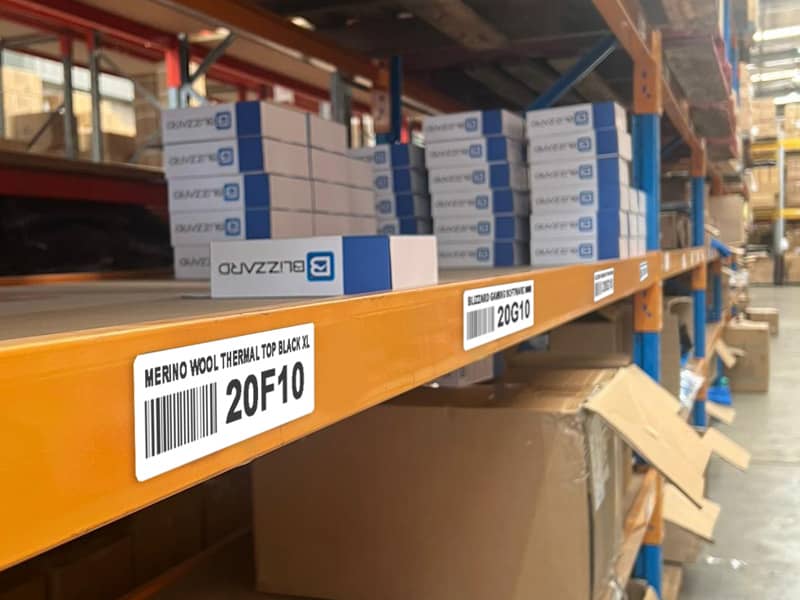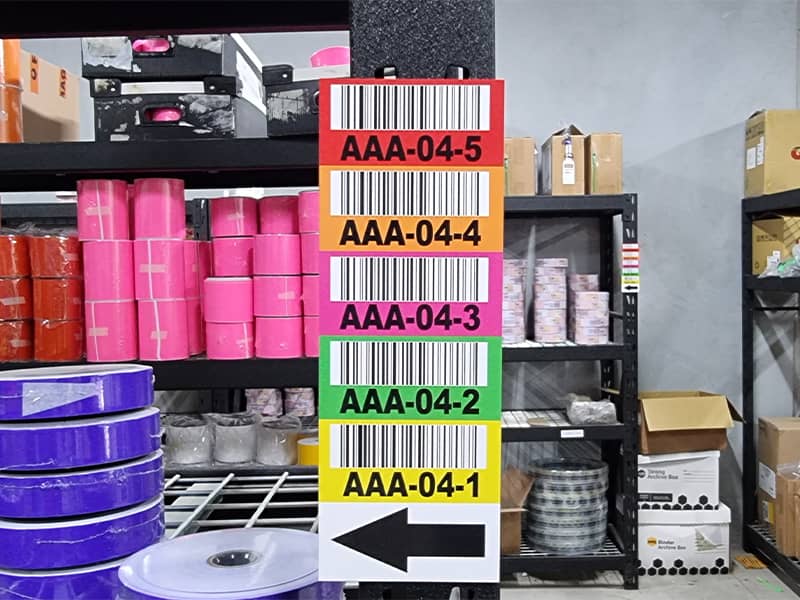How to Implement Barcodes in Your Warehouse:
A Comprehensive Guide

Table of Contents
How to Implement Barcodes in Your Warehouse: A Comprehensive Guide
How to Implement Barcodes in Your Warehouse
What Are Barcodes and How Do They Work?
Benefits of Using Barcodes in Warehouses
Overcoming Challenges in Barcode Implementation
Introduction
Barcodes have become a fundamental technology in modern warehousing, revolutionising inventory management and enhancing overall operational efficiency. If you’re looking to optimise your warehouse processes and improve accuracy, implementing barcodes is the way to go. In this article, we’ll walk you through everything you need to know about how to implement barcodes in your warehouse successfully.

How to Implement Barcodes in Your Warehouse
What Are Barcodes and How Do They Work?
Barcodes are a visual representation of data that can be read by optical scanners. They consist of parallel lines of varying widths, encoding information like product details, quantities, and serial numbers. When scanned, the barcode’s data is quickly decoded, allowing your warehouse team to access vital information with ease. The symbology used in barcodes, such as UPC (Universal Product Code) and Code 128, ensures universal compatibility and efficient data retrieval.
Benefits of Using Barcodes in Warehouses
Embracing barcodes in your warehouse operations comes with numerous benefits:
- Enhanced Accuracy: Human errors during manual data entry are drastically reduced, leading to more precise inventory management.
- Improved Efficiency: Barcode scanning accelerates the check-in, check-out, and tracking processes, saving time and labor costs.
- Real-Time Visibility: Barcodes offer instant access to stock levels, enabling better decision-making and preventing stockouts.
- Error Prevention: Barcode technology minimizes the risk of shipping the wrong products, reducing returns and customer dissatisfaction.
- Easy Integration: Barcodes seamlessly integrate with existing inventory and warehouse management systems.
Getting Started with Barcoding
To begin your barcode journey, follow these simple steps:
- Identify Your Needs: The first step towards successful barcode implementation is to assess your warehouse’s unique requirements. Identify pain points, areas for improvement, and the specific processes where barcodes can make a significant difference. LSI Keyword: Warehouse Barcode Solutions.
- Choose the Right Barcode System: With various barcode systems available, it’s crucial to select the one that aligns perfectly with your warehouse’s needs. Common options include 1D barcodes (UPC, EAN) and 2D barcodes (QR codes, Data Matrix).
- Train Your Team: Educate your staff on barcode usage, scanning techniques, and troubleshooting common issues.
Barcode Scanners and Hardware
Picking the right barcode scanner is crucial for smooth operations:
- Types of Barcode Scanners: There are various types, such as handheld, fixed-mount, and wireless scanners. Choose one that suits your warehouse layout and requirements.
- Compatibility: Ensure the scanner is compatible with your inventory management software for seamless integration.
- Durability: Opt for rugged scanners that can withstand the warehouse environment, including dust and potential drops.
Software Integration
Integrating barcode data into your warehouse management software is critical for real-time visibility and data synchronization. Explore compatible software options and find the best fit for your business.
Employee Training
Barcode systems are only effective when your staff knows how to use them efficiently. Provide comprehensive training to your employees on scanning, data entry, and overall barcode-related processes.
Barcode Labelling
Proper barcode labelling is crucial for accurate scanning and data retrieval. Understand the best practices for barcode placement and labelling to ensure smooth operations.
Barcode Labelling Best Practices:
Effective barcode labelling is crucial for seamless operations:
- Label Size and Material: Choose labels that are durable and appropriately sized for different product types and storage conditions.
- Clear Printing: Ensure barcode labels are printed with high-quality resolution and sharp contrast for accurate scanning.
- Consistency: Use the same barcode format consistently across all products and inventory locations.
Testing and Quality Assurance
Before implementing barcodes across your entire warehouse, conduct thorough testing and quality assurance to identify and rectify any potential issues.
Implementing in Phases
Rolling out barcode implementation in phases can help minimise disruptions and allow for better adaptation. Learn about the step-by-step process of implementing barcodes in stages.
Integrating barcodes with your inventory management system is pivotal:
- Data Synchronisation: Ensure seamless synchronisation between barcode data and your inventory database.
- Real-Time Updates: Enable real-time updates of stock levels and movement to prevent discrepancies.
Tracking and Monitoring
Once barcodes are in place, regularly monitor and track their performance. Analyse data and identify areas for further improvement to optimise your warehouse operations continually.
Barcode Security and Data Protection
Protecting sensitive data encoded in barcodes is crucial to maintaining the security of your warehouse. Implement robust security measures and data protection protocols to safeguard against potential threats.
While barcodes offer efficiency, consider these security aspects:
- Access Control: Implement access controls to restrict barcode system access to authorised personnel only.
- Data Encryption: Encrypt barcode data to protect sensitive information from unauthorised access.
Scaling Up Barcode Usage
As your warehouse grows, scaling up barcode usage becomes vital for seamless operations. Learn strategies to expand your barcode system to accommodate higher inventory volumes.
Integrating with Other Technologies
Enhance your warehouse’s capabilities by integrating barcode technology with other cutting-edge solutions like RFID and IoT. Experience the synergy of advanced technologies working together.
Barcodes and Inventory Accuracy
Explore how barcodes significantly impact inventory accuracy and how this contributes to better decision-making and customer satisfaction.
Overcoming Challenges in Barcode Implementation
As warehouse managers, implementing a barcode system can improve your warehouse operations, but it is not without its challenges. To ensure a smooth and successful implementation, it is crucial to address these hurdles proactively. One of the primary challenges is resistance from employees who may be accustomed to traditional inventory management methods. To overcome this, provide comprehensive training and highlight the benefits of the barcode system, such as increased accuracy and efficiency, which can boost their productivity and reduce errors.
Another challenge lies in selecting the right barcode technology and software that aligns with your warehouse’s unique needs. Conduct thorough research, engage with vendors, and test different options before making a decision. Additionally, integrating the barcode system with your existing software can pose difficulties. To mitigate this, collaborate closely with your IT team and the barcode system provider to ensure a seamless data exchange between systems.
Warehouse layout and design can also impact barcode implementation. Plan the barcode placement strategically, considering factors like item accessibility and ease of scanning. Regularly assess the system’s performance and gather feedback from your team to identify and address any bottlenecks or issues promptly.
By acknowledging these challenges and implementing proactive measures, you can successfully navigate the barcode implementation journey, empowering your warehouse to operate with heightened efficiency, accuracy, and ultimately, elevating overall productivity.

How to Implement Barcodes in Your Warehouse: FAQs
Using barcodes in a warehouse offers several advantages, including streamlined inventory management, minimised errors, enhanced data accuracy, increased productivity, and improved operational efficiency. If you are unsure where to start get in touch with us!
A barcode warehouse management system is a sophisticated software solution designed to streamline and optimise warehouse operations through the use of barcode technology. It enables businesses to efficiently track and manage inventory, monitor stock levels, and facilitate smooth order fulfilment processes.
The barcode warehouse management system operates by assigning unique barcodes to each item in the inventory. When new stock arrives, employees scan the barcodes to input the items into the system. As products are shipped out, the system updates the inventory status accordingly, providing real-time visibility into stock levels.
A barcode warehouse management system significantly improves inventory accuracy by minimising human errors associated with manual data entry. The system allows employees to scan barcodes, ensuring that the correct items are recorded into the inventory, and any stock movements are promptly updated in the system.
While the initial investment for barcode technology may vary depending on the scale of the warehouse and the complexity of the system, it is generally considered a cost-effective solution in the long run. The benefits of increased accuracy, productivity, and reduced operational costs often outweigh the initial expenses.
Conclusion
Implementing barcodes in your warehouse is a transformative step towards optimising operations and improving accuracy. By understanding the fundamentals, choosing the right system, and ensuring proper training, your warehouse will reap the numerous benefits that barcode technology has to offer. Embrace innovation, monitor performance, and continuously improve to stay at the forefront of warehousing excellence.






